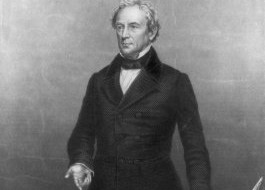
In the past several weeks, I’ve been asked quite a lot about public speaking.
While downing gin tonics over Brazilian BBQ at the SXSW Interactive tech conference, I was approached by the CMO (Chief Marketing Officer) of a start-up I advise.
She pulled me aside to ask primarily two questions:
1. Where can I learn about the right social media tools to use?
2. What books should I read to learn how to get good at public speaking?
Here were my answers….
1. Where can I learn about the right social media tools to use?
(Note: she has an extensive marketing background outside of social media)
Answer: Don’t worry about it.
If you know how to:
1) craft a clear and short benefit message to your ideal 1000 customers (read Kevin Kelly’s 1,000 True Fans, the only marketing article you’ll ever need to read)
2) secure and highlight testimonials and case studies
3) offer a simple trial option to big enterprises (but charge them – no free rides or they won’t value it), and
4) offer awesome customer service to the customers who matter (not becoming consumed by squeaky wheels with more free time than budget) just use the skills you have and view social media, primarily Twitter and Facebook, as communication channels. Nothing new, and you don’t need to respond to every comment/criticism, just like in personal life.
2. What books should I read to learn how to get good at public speaking?
Answer: I don’t know, but I can show you in less than 5 minutes how I do it.
Here was my answer on one sheet of paper:
 Tim Ferriss
Tim Ferriss
Truth be told, I don’t think I’m that good at public speaking. Tons of speakers crush me in presentation, poise, and general lack of F-bombs. Granted, I was born and raised on Long Island, but the smooth delivery doesn’t seem to be a natural skill. Here are the ground rules I developed for myself to compensate, and I’ve been able to jam with some fun audiences as a result (paragraph 5 here), including the EG/TED, fancy schools, Fortune 100 big ‘uns, CIA/NSA, and tech gigs:
1) I won’t focus on being a “public speaker”. I’ll focus on being a teacher from the stage. What I might lack in delivery, I’ll make up for with actionable takeaways.
2) It’s fine (oftentimes good) if some people dislike you or disagree with you, but no one should misunderstand you. Everything you say should be clear.
3) It’s totally fine if you get nervous and stammer a bit, drop F-bombs where needed, or generally feel like a nervous wreck. If you give good actionable, clear advice, people will forgive it all.
4) Have fun and laugh at yourself whenever possible. Beating the audience to the punch makes it much less fun for them to slam you.
5) Have one 16-oz. Diet Coke 45 minutes prior to speaking and another about 20 minutes prior to speaking. Pee before getting on stage or you will look like a squirmy kid at a spelling bee. Yes, Diet Coke will give you hairy palms and insomnia, but this caffeine dosing has proven perfect for me for taking the stage. Could be as much placebo effect as anything else.
Those basics out of the way, here are my explanations of the paper summary above:
1) If the format is a 60-minute keynote, a typical format, then I automatically build in at least 20 minutes of audience Q&A, which I usually make 30 minutes.
This reduces my presentation time to 30-35 minutes and allows me to tailor the presentation to the group (via answering their questions) instead of guessing what is most important to them and delivering as a pure monologue.
2. I assume my presentation will be in five parts:
approximately 2-minute introduction, three 10-minute segments, and a 2-minute close. I use this “rule of thirds” for the three segments whether the presentation is 60 minutes or 10 minutes.
3. I then plan the content in this order:
10-minute segments – For each segment, what is the main takeaway or usable action for the audience? This means I have three main points in this talk, no more. To flesh out to 10 minutes in length, I then use a PEP (point-example-point) format or, my preference, EPE (example-point-example) format. PEP means you illustrate the concept, then give an example or case study, then reiterate the concept and actionable next step. EPE means you give an example or case study, then explain the concept, then finish with another case study or example. I sketch out 2-3 EPE or PEP for each 10-minute segment, and all of this is done on 1/4 to 1/2 a piece of paper.
Introduction – Now that I have a better idea of my content, I decide on the introduction, preferably starting with a story and then explaining that I’ll introduce three concepts that will help them do “X”, where “X” is whatever the overarching theme of the presentation is.
Unless you are a comedian or have already tested jokes with audiences who don’t know you, do NOT use rehearsed jokes. If a joke falls flat in your intro, it will ruin the experience for you and your audience.
4. Now the harder work and the fun of discovery – rehearsal:
The PEP/EPE is usually sketched out well in advance, and the rehearsal is done the night before the presentation.
I rehearse the intro, segment 1, segment 2, and segment 3, all separately. I’ll repeat the two-minute intro — winging it — until I nail it. I use a kitchen timer on countdown, and each time I finish, I write down any one-liners or wording that I like. Note that I NEVER memorize a speech verbatim, but I do ensure that I have memorized the starting and closing 2-3 sentences for each portion (intro, segments) at this point.
How many times will I repeat each segment? Until I’m happy. I am a perfectionist, so for certain presentations, this could be up to 10 times.
5. Once I have these parts in order, I then wing the close (not before), and repeat like the other portions until I’m happy.
For me, it’s not productive to work on the closing statements or questions until I have the rest of the content polished and ready to rock.
6. Now link them all together and do the whole thing until you nail it at least once.
Expect you’ll forget about 10% of your memorized lines or anecdotes, and that’s OK, but review your notes each time to ensure you’re hitting the most important points. Once you’ve blazed through it well once, go to bed.
One additional tip: I came to realize long ago that I can barely sleep the night before presentations; it doesn’t matter how many times I do them. So… expect that you won’t sleep and don’t let that add to the stress of the experience. Just get extra sleep the two nights before and plan on an all-nighter. If you get sleep, it’ll be a pleasant surprise instead of a source of panic.
Back to our story:
At this point, you should put your head on your pillow confident. REM sleep cycles will make your delivery smoother. This is why I always rehearse just before bed with no drinks, dinners, or conversations in between.
The next morning, I go for a 20-30 minute brisk walk after a light protein-rich breakfast (no bread). I also avoid caffeine until no more than 1.5 hours before game time, as I found it was too easy otherwise to burn yourself out drinking coffee or tea as a nervous distraction.
Once you’re on deck, just remember: if you’ve done the above, you’ve prepared more than most speakers. If you’re getting chased by a lion, you don’t need to run faster than the lion, just the people running with you. Speaking with other people is similar: you don’t need to be perfect, you just need to be better than a few others, and you’ve already built in insurance with good actionable content. Other presenters too often focus on delivery and forget content; delivery is the first thing to suffer from nerves, but content won’t. It’s your bedrock.
As long as you can keep your time, you’ll f***ing rock it.
Walk up with a smile and knock ’em dead.
Read the original article on The Blog of Tim Ferriss. Copyright 2017. Follow The Blog of Tim Ferriss on Twitter.




